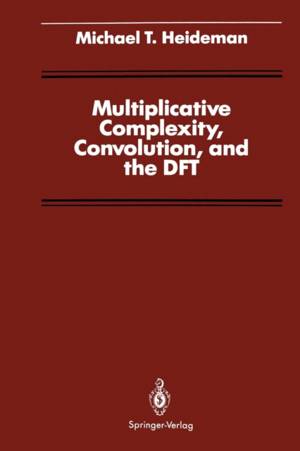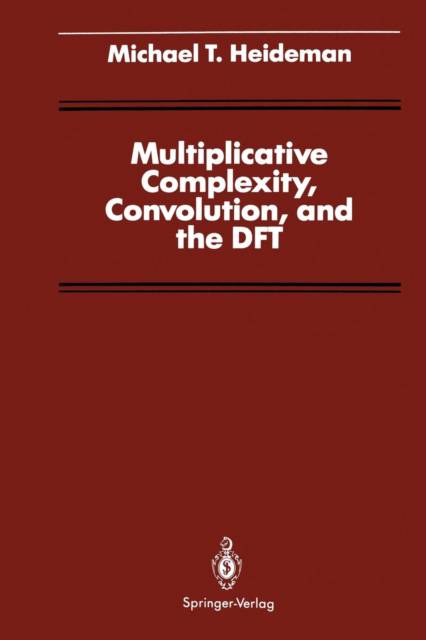
- Afhalen na 1 uur in een winkel met voorraad
- Gratis thuislevering in België vanaf € 30
- Ruim aanbod met 7 miljoen producten
- Afhalen na 1 uur in een winkel met voorraad
- Gratis thuislevering in België vanaf € 30
- Ruim aanbod met 7 miljoen producten
Zoeken
Omschrijving
This book is intended to be a comprehensive reference to multiplicative com- plexity theory as applied to digital signal processing computations. Although a few algorithms are included to illustrate the theory, I concentrated more on the develop- ment of the theory itself. Howie Johnson's infectious enthusiasm for designing efficient DfT algorithms got me interested in this subject. I am grateful to Prof. Sid Burrus for encouraging and supporting me in this effort. I would also like to thank Henrik Sorensen and Doug Jones for many stimulating discussions. lowe a great debt to Shmuel Winograd, who, almost singlehandedly, provided most of the key theoretical results that led to this present work. His monograph, Arithmetic Complexity o/Computations, introduced me to the mechanism behind the proofs of theorems in multiplicative complexity. enabling me to return to his earlier papers and appreciate the elegance of his methods for deriving the theory. The second key work that influenced me was the paper by Louis Auslander and Winograd on multiplicative complexity of semilinear systems defined by polynomials. After reading this paper, it was clear to me that this theory could be applied to many impor- tant computational problems. These influences can be easily discerned in the present work.
Specificaties
Betrokkenen
- Auteur(s):
- Uitgeverij:
Inhoud
- Aantal bladzijden:
- 155
- Taal:
- Engels
- Reeks:
Eigenschappen
- Productcode (EAN):
- 9781461283997
- Verschijningsdatum:
- 1/11/2011
- Uitvoering:
- Paperback
- Formaat:
- Trade paperback (VS)
- Afmetingen:
- 156 mm x 234 mm
- Gewicht:
- 244 g

Alleen bij Standaard Boekhandel
+ 223 punten op je klantenkaart van Standaard Boekhandel
Beoordelingen
We publiceren alleen reviews die voldoen aan de voorwaarden voor reviews. Bekijk onze voorwaarden voor reviews.











